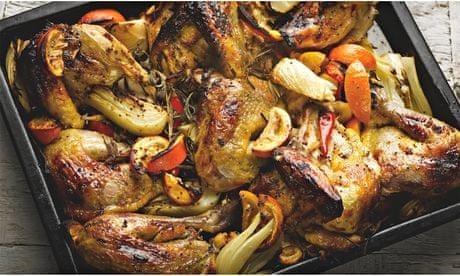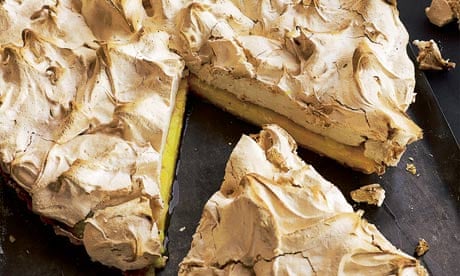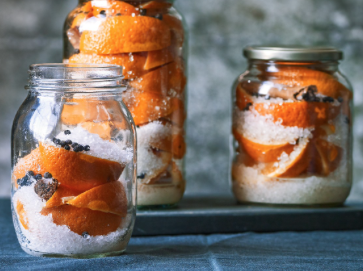More than marmalade
- rosemary
- Aug 28, 2020
- 6 min read
"their Indian name is "narayam", which means 'perfume within'"

It's that time of year again. Marmalade making time and I have talked about that before, so am not going to go into it here. This year's crop comes direct from the Murray region and Kingfisher Citrus, whose oranges I used last year. I wrote about them too. Last year I bought them from their stall in Eltham Farmers' Market, but this year, although the market itself seems to be still going the Kingfisher people are not joining in. Well they can't can they? Melbourne is in lockdown. So this year I ordered them online, and a very good service they provide I have to say.
This is not all that I bought though. This is just 5kg. I have bought 20kg! Well if you are going to provide marmalade for your man for a year, you need a few more than 5kg. They are admittedly a bit pricey but then they are sort of special.

I don't think I have ever seen Seville oranges in the supermarket, although I did once buy them from Colonial Foods supermarket at Doncaster Shopping Town. I used to buy them in the Queen Vic Market, but even there they were a vanishing species and our usual supplier said that orchardists were taking out the Seville trees. Why one wonders? After all people still eat marmalade, and presumably they still make marmalade somewhere in Australia. Anyway the folks at Kingfisher decided to actually plant a few, and so now they are my source. Don't they look genuinely sort of home-made?

All different shapes and sizes and unwaxed too. You don't eat them - they are too sour:
"Their skin is pockmarked and the zest is so intense you feel your mouth is bathing in essential oil." Bee Wilson - The Guardian
I doubt I actually shall do something else with them other than the marmalade, but I am aware that there are recipes out there that use them. I have sometimes come across them and not been able to test them out because, of course, I don't have any Seville oranges to hand. They have a very short season, but apparently are freezable, so maybe I should do that.
It was interesting though, when I came to look for recipes from my 'library'. I went straight to Claudia Roden's comprehensive tome on Spanish food and found not a single recipe that used Seville oranges. I mean this is where most of the world's Sevilles are grown after all. There was also nothing in that Spanish and Mexican book I picked out as a lucky dip the other day. Elizabeth David had nothing. Interestingly the star of my 'library' is our own Maggie Beer. But guess what. This is because she grows them commercially and makes a couple of products with them. So although you will find recipes on her website, when you come to look at them you will find that they are recipes that are built around her products - the products being Seville oranges in spiced verjuice syrup, Seville vino cotto and, of course, Seville marmalade. In her book Maggie's Harvest, however, she does have a couple of recipes - one for a stuffing for roast duck - with apples, prunes and prosciutto and the other for a brioche with candied peel.
Now these two uses of the Seville orange are common. In fact I would say that the most common things I found were for duck, using candied peel, in a vinaigrette or mayonnaise or using Seville orange curd.
So duck. Well it ranged from marinades, through stuffings to glazes and sauces. A variation of Sauce bigarade being the main one. I think I have talked about Sauce bigarade before. Here are four recipes that sort of demonstrate the options. One of them is actually for guinea fowl, which I don't think you can get here - or only from specialists anyway - and another is for chicken, but they are interchangeable I would guess. Maybe pork or even kangaroo or venison would be good too - something rich and gamey anyway. Left to right, top to bottom we have: Slow-braised duck legs with Seville oranges, star anise and savoy cabbage from Thomasina Miers of the Guardian; Yotam Ottolenghi's Roast guinea fowl with Seville orange and red chilli; Delia Smith's Roast Seville orange glazed duck with port wine sauce and Nigella's Chicken traybake with bitter orange and fennel. I think Delia's looks the most tempting.

Neither, Jamie, Nigel nor Donna had anything other than marmalade. Apparently the Seville juice is often used instead of lemon or lime in ceviche but the only other fish recipe I could find was Nigella's Snapper With Seville Orange Juice, Pine Nuts And Olives. and this is from the New York Times so the link may not work - you might have to log in.
There are , of course lots of recipes that use marmalade, but that's not quite the same as using the actual oranges.
Then there's the peel itself, which you can either candy or dry. "Jennifer McLagan removes the peel and dries it in strips, before pounding it into a bitter powder to sprinkle 'over everything from a veal chop to a bowl of strawberries'" says Bee Wilson of The Guardian. Another way is to:
"pare strips of zest from the flesh, thread together and hang in a dry place. Add a strip to bouquet garni to lend depth of flavour to rich beef stews."
Many people have recipes for candying the peel - including Robert Carrier, who in spite of also writing a book on the food of Spain, had no recipes in that book that included Seville oranges. Maggie Beer's is perhaps the best though:
"Cut young, sound fruit in half lengthways. Leaving the pith attached to the peel, remove the flesh. Put the peel into a heavy-based enamelled or stainless steel saucepan and cover it with water, then bring to the boil. Pour off the water and repeat this process twice to remove unwanted bitterness. Drain the peel well and weigh it, then return the peel to the saucepan with an equal weight of sugar. Starting over a low heat, dissolve the sugar, and then simmer until the peel is translucent - this may take up to 1 hour. Drain the peel from the syrup and spread it on a cake rack to dry. Turn daily until dried, then store in an airtight container. With a quality dark chocolate, this peel is one of the great flavour combinations."
A bit of a process I guess but if you are into chocolate desserts then this is for you.
Then there is curd. Hugh Fearnley-Whittingstall has a recipe for this, which he then uses in a Seville orange meringue pie. I think that The Telegraph's Seville orange tart with roast orange slices also used a curd as the basis of the tart. There are certainly a lot of similar recipes out there.
Still on the dessert front you can make cake - Seville orange cake on the Kidspot website; Seville orange possets with kamut flour and pecan shortbread cookies Thomasina Miers, and no I don't know what kamut flour is (and neither does my spell checker). She says it's healthier, but I suspect ordinary flour would do. Bee Wilson has Seville orange sabayon and Nigella has perhaps the most tempting looking one of all No churn bitter orange ice cream. Such a pity that the Seville orange season is in winter. No picture of the Sabayon I'm afraid.
Last of all - some oddments. Preserved Seville oranges from Waitrose of all places - use just like preserved lemons, Seville orange wine - a weird one this from the Novocastrian Vintner's Gazette - the photo is not of the finished wine - just after five days of fermentation. I assume it ultimately becomes clear. I reckon a kind of limoncello would be a better bet. And then there is Seville orange membrillo from Luvcookbooks via Food 52. (Membrillo is the quince paste kind of thing) - at last something Spanish. No picture.
And I nearly forgot the vinaigrette, and the advice to basically use the juice in the same way as you would lemon and lime juice - as in mayonnaise and aioli for example. Bee Wilson had a very simple vinaigrette recipe:
"Seville orange 1, extra-virgin olive oil 80ml, a fruity one , Maldon salt
Zest half the orange and whisk this together with the oil, 10-20ml Seville juice and a hefty pinch of salt. Taste and keep adding juice as needed."
Apologies a bit for this one as I realise that none of you are probably ever going to have anything to do with Seville oranges, unless you have a tree in your garden. My neighbour does, and last year he gave me some with which to make marmalade. But this year apparently there have been none. Which sounds rather like my attempts at growing citrus - a complete and utter disaster.
"We don’t realise that we hold in our hands something whose sour juice could enliven all our meals – yes, even avocado toast." Bee Wilson - The Guardian
At least I won't be looking for things to do for the next few days. And I've been a home-based tourist again and taken some pictures. I should also have taken pictures of all the debris around the garden from last night's storm, but I think David has cleared it all up by now.

























Comments